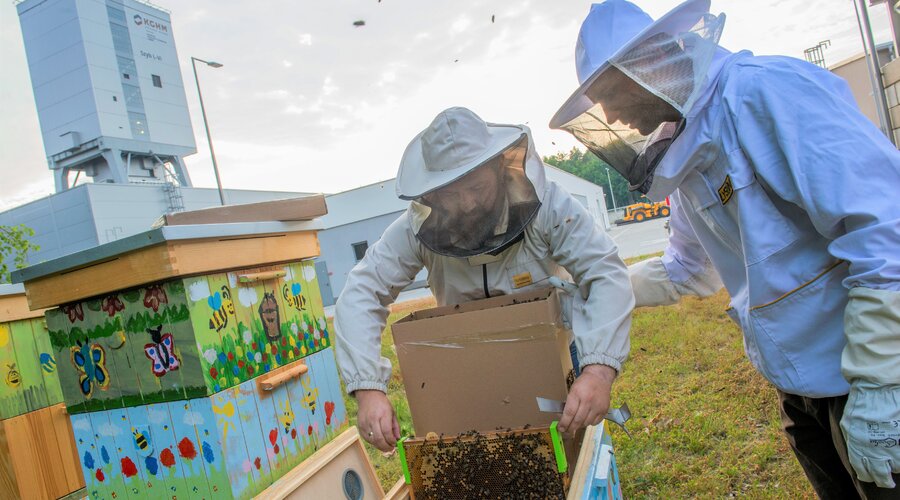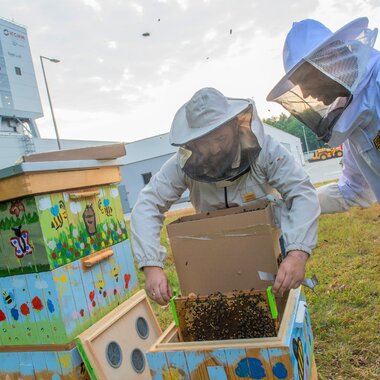Copper bees settled down near the mining shaft
KGHM has its own bee yard! – three beehives has been set up nearby the LVI shaft at Zakłady Górnicze Lubin. This is a result of the KGHM's bee conservation project executed together with Polska Grupa Uzdrowisk, under which a film has been created about Group's efforts to protect the natural environment.
The residents of those beehives are Carniolan honeybees which originate from the southern Europe. This bee subspecies is gentle and non-aggressive – perfect for populated areas. Each beehive is inhabited by approximately 70 thousand bees. Konrad Bajger, an employee of KGHM, will take care of them. In settling in the new residents, the volunteer was assisted by the ambassador of the Copper Company, a well-known ski tourer, Andrzej Bargiel. The beehives has been painted by the young residents of the Copper Belt during the beekeeping workshops organised by KGHM.
Under the ecological project, additional bee yards have already been established at facilities belonging to the Polska Grupa Uzdrowisk. In the vinicity of the Water Bottling Plant at Uzdrowiska Kłodzkie there are 10 families of bees, and 3 beehives has been set up near the peat mine in Uzdrowisko Połczyn Zdrój.
The purpose of these activities is to inspire the Group's employees and the residents of the Copper Belt to get involved in environmental and climate protection campaigns. The mentioned activities include, among others, setting up bee yards, building houses for wild pollinators or creating flower meadows. The film about the KGHM Group's efforts entitled "Miedziowe pszczoły" (Copper bees) is available at YouTube.
Bees play a key role in our environment. They feed on nectar and pollen, while pollinating the visited plants which require this to spread and grow. Pollination provides a benefit in terms of food. According to the United Nations Food and Agriculture Organisation, 100 crop species provide about 90% of the world's food resources.
Ecology is one of the strategic directions of KGHM's development. The Company's activities has been recorded in the Environmental Policy and the Climate Policy. The overriding objective of the Company is to achieve climate neutrality by 2050.
KGHM also works actively to preserve, and where this is not possible, to compensate for lost biodiversity and to manage land and forests responsibly. The Company actively supports, among other things, reforestation in the areas in which it operates. This past year alone, 29 800 trees were planted at Huta Miedzi Legnica. Ornithology fans, on the other hand, are familiar with falcons nesting on one of the chimneys of the Huta Miedzi Głogów.




